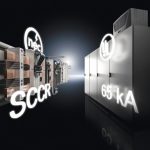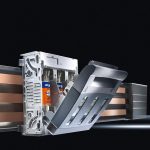Firmen im Artikel
Roughly one in ten machines or systems produced by the VDMA’s member companies will be put into operation in the USA. America is thus the single most important export market for German mechanical and plant engineers, even ahead of China. The relevant electrical standards must be taken into account with regard to electrical switchgear, which represents an important element of virtually any system. In contrast to Europe, where IEC standards are authoritative, it is UL regulations which are binding in the USA. This represents a frequent challenge for electrical planners.
Who approves the system?
Any system that is to be commissioned in the USA must be inspected on site. The “Authority Having Jurisdiction” (AHJ) is responsible for the acceptance inspection of the electrical switchgear. Depending on local regulations and on the federal state or district, this could be the mayor or an employee of the fire department, i. e. someone without any electrical engineering expertise. The reason for this is that the National Fire Protection Association (NFPA) is in charge of licensing regulations in the USA. Thus, in many cases, fire protection plays a major role compared to the European market.
In the case of electrical switchgear, Underwriters Laboratories (UL) standards form the basis for acceptance. The certification of the enclosure in accordance with UL 508A is normally a precondition of the system being accepted by the AHJ. Acceptance without UL 508A certification tends to be very difficult. However, mere possession of UL 508A certification does not necessarily imply that all is well. Another essential regulation which must be adhered to is the National Electric Code (NEC), which is revised every three years. This sets out all the most important rules for low voltage electrical installations. The NEC covers a large number of areas, from electrical installations in apartments through general building installations to solar power systems. Crucially for switchgear construction, it also applies to low voltage switchgear in mechanical and plant engineering. The current NEC 2017 is published by the NFPA as NFPA 70. The electro-technical equipment of machinery is described by the NFPA in NFPA 79.
Variety of regulations and standards
For many users, it is initially confusing that at least three different organisations – UL, NEC and NFPA – and their respective regulations and standards all play a role in the context of US approvals. However, there is a certain logic to this division of responsibilities. UL 508A applies exclusively to enclosures. However, the AHJ is responsible for approving the entire system and hence also has to consider the entire electrical installation. This is where NEC 2017 and NFPA 79 come in. Nevertheless, the latest amendments to NEC 2017 have a direct impact on switchgear construction. The most important innovation in this new version is the required SCCR (short-circuit current rating). As a rule of thumb, the SCCR of the system must be at least as high as the supply-side SCCR. This is where the real problem lies for switchgear manufacturers. Very often, the company that engineers the switchgear is a contractor who took on the job from a third party and is therefore totally unaware of the site where the future plant will be deployed. In addition, since there is frequently no contact person who can provide information on the supply-side SCCR, determining the correct SCCR value can be challenging. In the past, 5 kA was a popular choice and it was left to the fitter on site to implement this during commissioning by providing appropriate fusing. The NEC has now put an end to this practice. There is an acute danger with new plants which were planned according to the old version of the NEC and UL 508A that the AHJ will refuse to let them be commissioned before rework has been performed.
SCCR verification
Supplement B (SB) of UL 508A explains how to provide evidence of the SCCR. Similar to the regulation in the IEC 61439 standard, both individual testing and a recognised verification method, which is also described in the SB, are possible. This verification method allows the switchgear manufacturer to avoid the high cost of individual tests. However, it is essential that all systems and components be certified accordingly. In order to determine the appropriate values with this method, the planner must take a look at the individual SCCR values of the components and devices concerned from the load side of a switchgear unit to the infeed point. The components or tested combinations which have the lowest SCCR in the main circuits of the enclosure must be identified for this purpose. The lowest individual SCCR determines the SCCR of the entire enclosure (overall SCCR). Generally speaking, only the power circuits need to be considered here, since in the case of control circuits, the transformers are usually connected upstream.
Tested busbar systems
Ideally, the overall SCCR will already have been determined during the planning process. It is important to select suitable systems and components, in order to implement the switchgear in conformity with standards and at the same time economically. The Riline 60 busbar system from Rittal has a continuous SCCR of 65 kA. Moreover, since the system is cULus-listed, UL 508A approval is simplified. Tests for compliance with the Conditions of Acceptability (CoA) can be ignored with all UL-recognised components. The SCCR of the Riline 60 busbar system is already known. The planner merely has to make sure that any top-mounted equipment such as circuit breakers, motor circuit breakers, etc. also has an appropriate SCCR. If the components are selected in advance, proof of SCCR is comparatively straightforward. Switchgear manufacturers can then design their switchgear with a high SCCR of 65 kA very easily and conveniently and are optimally prepared for acceptance by the AHJ.
Rittal not only offers a complete range of switchgear for the North American market in the form of the Riline 60 and numerous other UL-listed components and systems; the company also organises technical seminars at which switchgear manufacturers are regularly kept up to date with the latest standards. These seminars additionally impart a great deal of practical knowledge which the participants can then apply to their projects directly. One seminar series focuses on standardised solutions for the USA and Canada under the heading “Switchgear and control cabinets for North America: Codes and Standards, Installations to UL 508A and NFPA 79”. It can be provided several times a year if required.
Online search: cpp0118rittal
Hall 11, Booth E6











